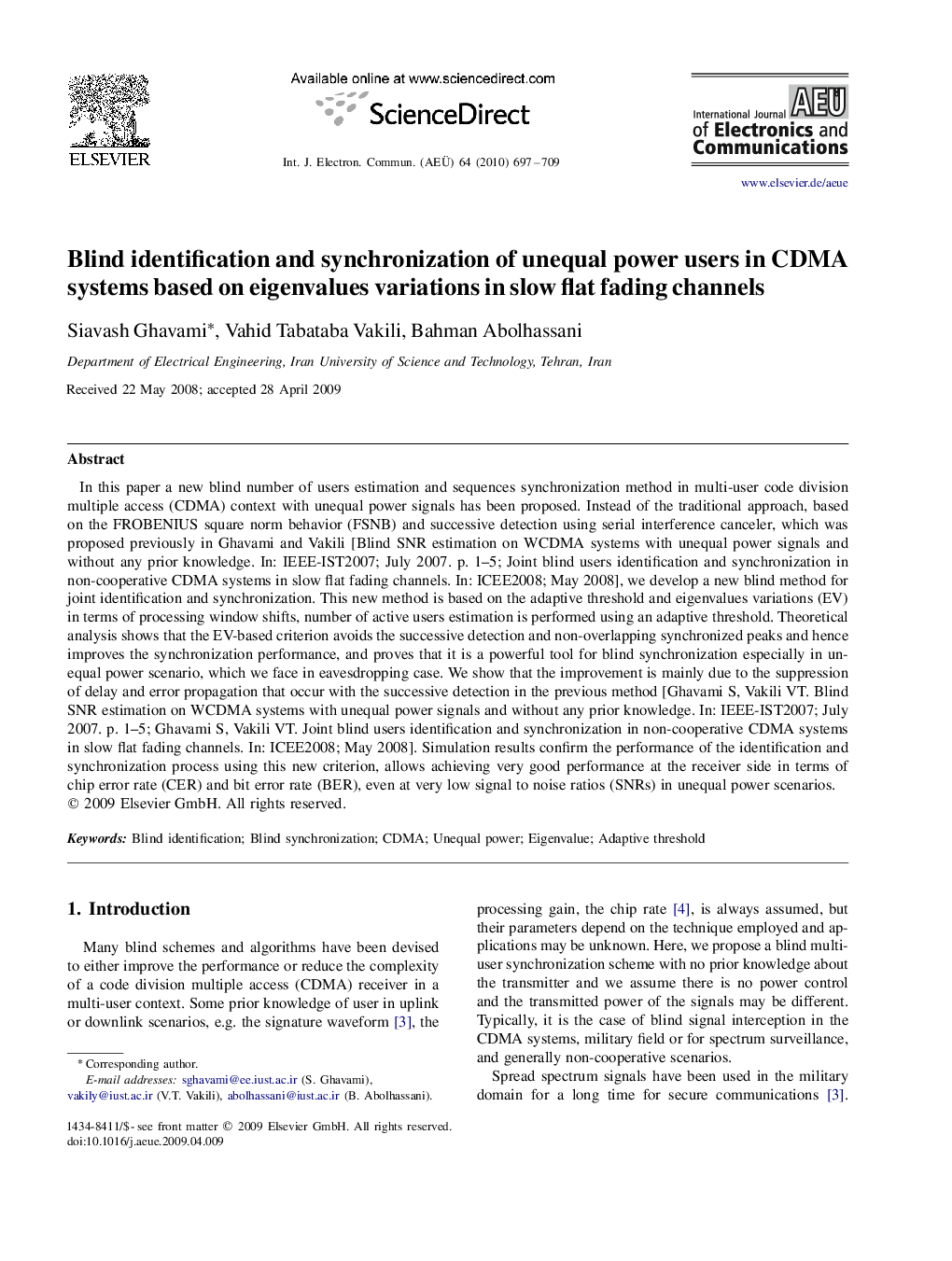| Article ID | Journal | Published Year | Pages | File Type |
|---|---|---|---|---|
| 446598 | AEU - International Journal of Electronics and Communications | 2010 | 13 Pages |
In this paper a new blind number of users estimation and sequences synchronization method in multi-user code division multiple access (CDMA) context with unequal power signals has been proposed. Instead of the traditional approach, based on the FROBENIUS square norm behavior (FSNB) and successive detection using serial interference canceler, which was proposed previously in Ghavami and Vakili [Blind SNR estimation on WCDMA systems with unequal power signals and without any prior knowledge. In: IEEE-IST2007; July 2007. p. 1–5; Joint blind users identification and synchronization in non-cooperative CDMA systems in slow flat fading channels. In: ICEE2008; May 2008], we develop a new blind method for joint identification and synchronization. This new method is based on the adaptive threshold and eigenvalues variations (EV) in terms of processing window shifts, number of active users estimation is performed using an adaptive threshold. Theoretical analysis shows that the EV-based criterion avoids the successive detection and non-overlapping synchronized peaks and hence improves the synchronization performance, and proves that it is a powerful tool for blind synchronization especially in unequal power scenario, which we face in eavesdropping case. We show that the improvement is mainly due to the suppression of delay and error propagation that occur with the successive detection in the previous method [Ghavami S, Vakili VT. Blind SNR estimation on WCDMA systems with unequal power signals and without any prior knowledge. In: IEEE-IST2007; July 2007. p. 1–5; Ghavami S, Vakili VT. Joint blind users identification and synchronization in non-cooperative CDMA systems in slow flat fading channels. In: ICEE2008; May 2008]. Simulation results confirm the performance of the identification and synchronization process using this new criterion, allows achieving very good performance at the receiver side in terms of chip error rate (CER) and bit error rate (BER), even at very low signal to noise ratios (SNRs) in unequal power scenarios.
